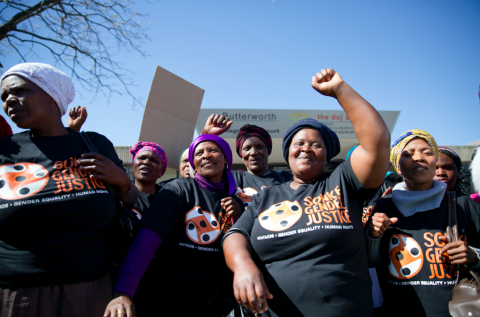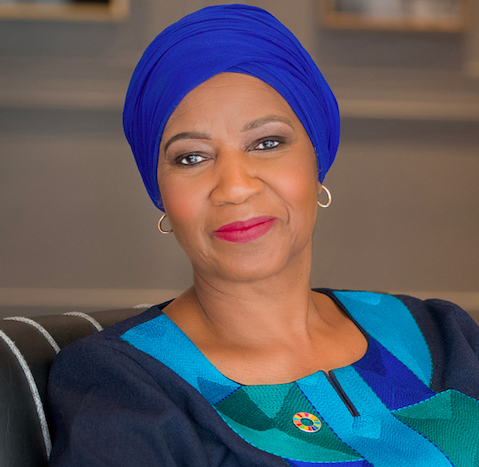Business Day National Women’s Day
Taking Charge
It has been more than a century since the world celebrated its first International Women’s Day, honouring the movement for equal labour, socio-economic development and voting rights for women.
During the past hundred years or so, the world has made progress in terms of gender equality, from a social and political as well as an economic point of view. Women are doing things that were unimaginable only a few decades ago. Today, some of the world’s biggest brands have women chief executive officers (CEOs). From IBM (Ginni Rometty), PepsiCo (Indra Nooyi) and General Motors (Mary Barra) to GlaxoSmithKline (Emma Walmsley) and Siemens (Lisa Davis).
South African women have taken charge too, including Priscillah Mabelane, who was appointed as BP Southern Africa’s new CEO in 2017. She is the first black woman to head an oil company. In the meantime, former Shanduka Group CEO Phuti Mahanyele is heading Sigma Capital while Dudu Msomi has been serving as the CEO of Busara Leadership, the company she founded in 2009.
Despite this progress, women continue to struggle with economic underrepresentation and professional sidelining. South Africa is no exception. A 2017 Grant Thornton study of 5 500 South African businesses, reveals that women, who make up more than 50 per cent of our country’s workforce, hold only 28 per cent of senior management roles. Less than a third of businesses (31 per cent) that took part in the study have no women on their management teams.
When looking at our country’s boardrooms, things aren’t much better. According to the Southern African chapter of the 30% Club, a global campaign that aims to achieve a minimum of 30% female representation on executive boards, women account for 17 per cent of board positions on all JSE-listed and state-owned companies. Besides impacting women’s socio-economic position and career development, the above-mentioned hurts the private sector. “There is hard evidence that companies with diverse teams and which actively promote and advance women to the highest levels of management deliver better results,” says Sally Hutton, managing partner at law firm Webber Wentzel.
Former deputy global head of Human Resources for the Standard Bank Group Shirley Zinn concurs. “Boards and executive committees need the requisite mix of skills, knowledge, experience, insight, and personalities to ensure effective governance, problem-solving, oversight and strategic capabilities,” says Zinn, who runs her own transformation consulting agency and serves as a non-executive director at gender mainstreaming organisation Business Engage.
“We need to critically investigate the narrative underpinning the numbers. There is a distinct and worrying disconnect when it comes to the practical implementation of appointing women on boards.”
Prevailing gender stereotypes, deep-seated sexist practices, and patriarchal and paternalistic behaviours are part of this problem. It includes the myth that women don’t become CEOs or directors because they don’t have the same leadership aspirations as men. This particular issue needs to be actively dealt with by males in top positions, says Shirley Machaba, PriceWaterhouseCoopers’s Africa Internal Audit Leader and Chair of the company’s South Africa governing board.
“They need to dispel the myth that only men can do well on challenging jobs, starting with treating their daughters the same way as their sons,” says Machaba. Like Hutton and Zinn, she is a member of the 30% Club. “Males in executive positions need to be trained on diversity on a regular basis, so they can become trainers on diversity themselves.”
Jeanett Modise, Chief Human Resources Officer at Sanlam Investments, shares Machaba’s views. Men in senior roles, she says, have to actively progress gender diversity in the overall business environment and help support women to advance their careers to executive and board level. The reason is simple: they are closer to the fire.
“It is a fact that most corporate senior roles are occupied by men. This gives them a tremendous opportunity to set the right tone and contribute meaningfully to the debate,” she says. “This is not a journey that women can take alone. It should be a partnership.”
At board level, male boardroom members need to put more effort in making their structures more diverse, says Vanisha Balgobind, executive head of HR at Exxaro Resources. “Chairmen should act as change agents to make sure women are positively received in boardrooms – setting the tone for the rest of the organisation. One has to create a sense of urgency for diversity on boards.”
Agreeing that gender diversity won’t work without buy-in from men, women’s involvement is important too. Both Zinn and Modise are dedicating time to engage in South Africa’s corporate gender inclusivity debate while coaching and mentoring young women in developing their careers.
Hutton agrees that besides the involvement of men, younger women need the guidance of strong female role models. “After my appointment as Managing Partner in 2014, I received correspondence from young women both within and outside the firm, expressing what my position meant to them. It struck me then, that those of us in senior positions should take responsibility to be role models and be more visible and vocal. We can help dispel stereotypes and demonstrate what is possible.”
That is why she drove the adoption of Webber Wentzel’s formal gender strategy in 2015, which is overseen by a working group that monitors diversity progress and sets new targets each year. This has started to bear fruit: Webber Wentzel’s senior leadership team has 48% women representation.
When asked her opinion, Balgobind says that women in business should be the enablers of embracing and celebrating diversity at the top. “They should act as role models for other women across the organisation.”
Machaba goes a step further. “Women in leadership positions need to invest actively in others to make sure there is a critical mass of women on boards and in executive positions,” she says. “They need to make use of the ‘seat at the table’ by proactively influencing decision makers and getting involved in discussions and decisions that affect women. Women at the top should, truly, lift others as they rise.”






 Sign-up and receive the Business Media MAGS newsletter OR SA Mining newsletter straight to your inbox.
Sign-up and receive the Business Media MAGS newsletter OR SA Mining newsletter straight to your inbox.